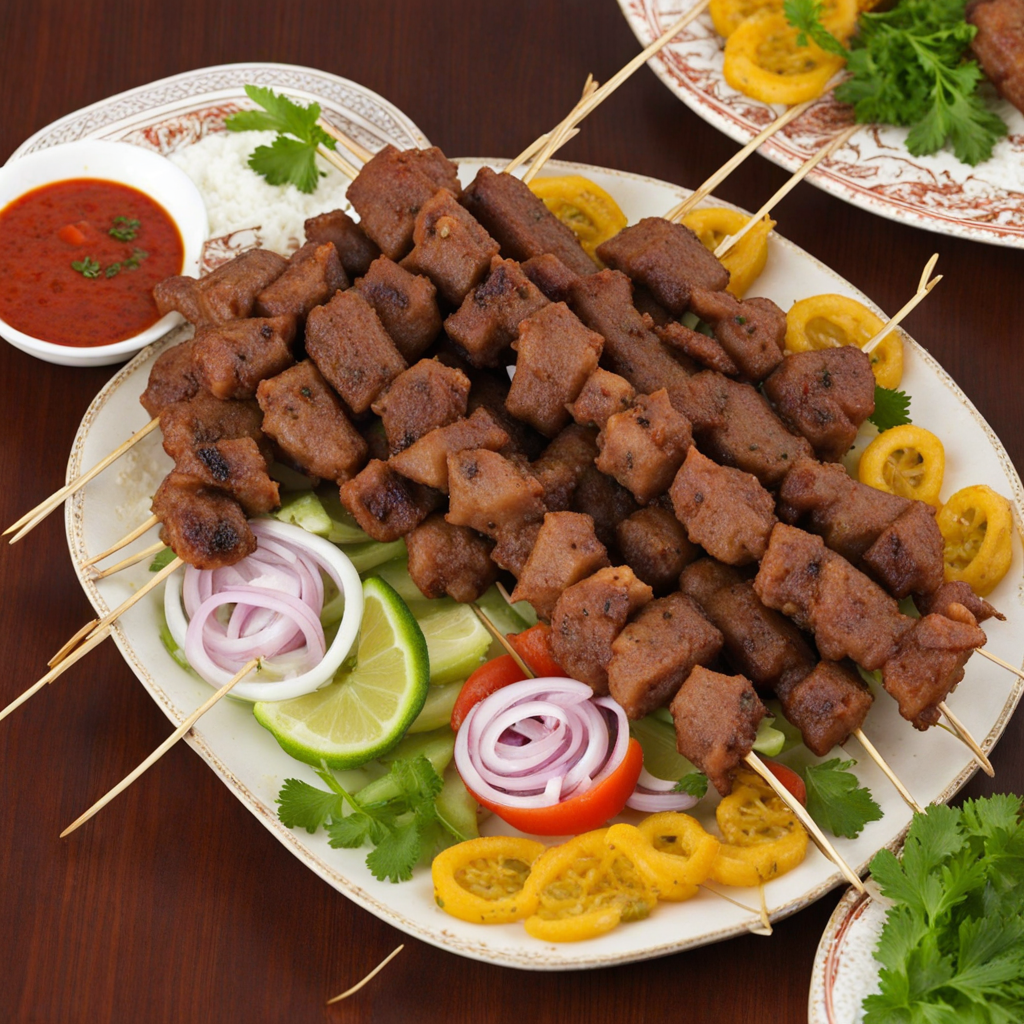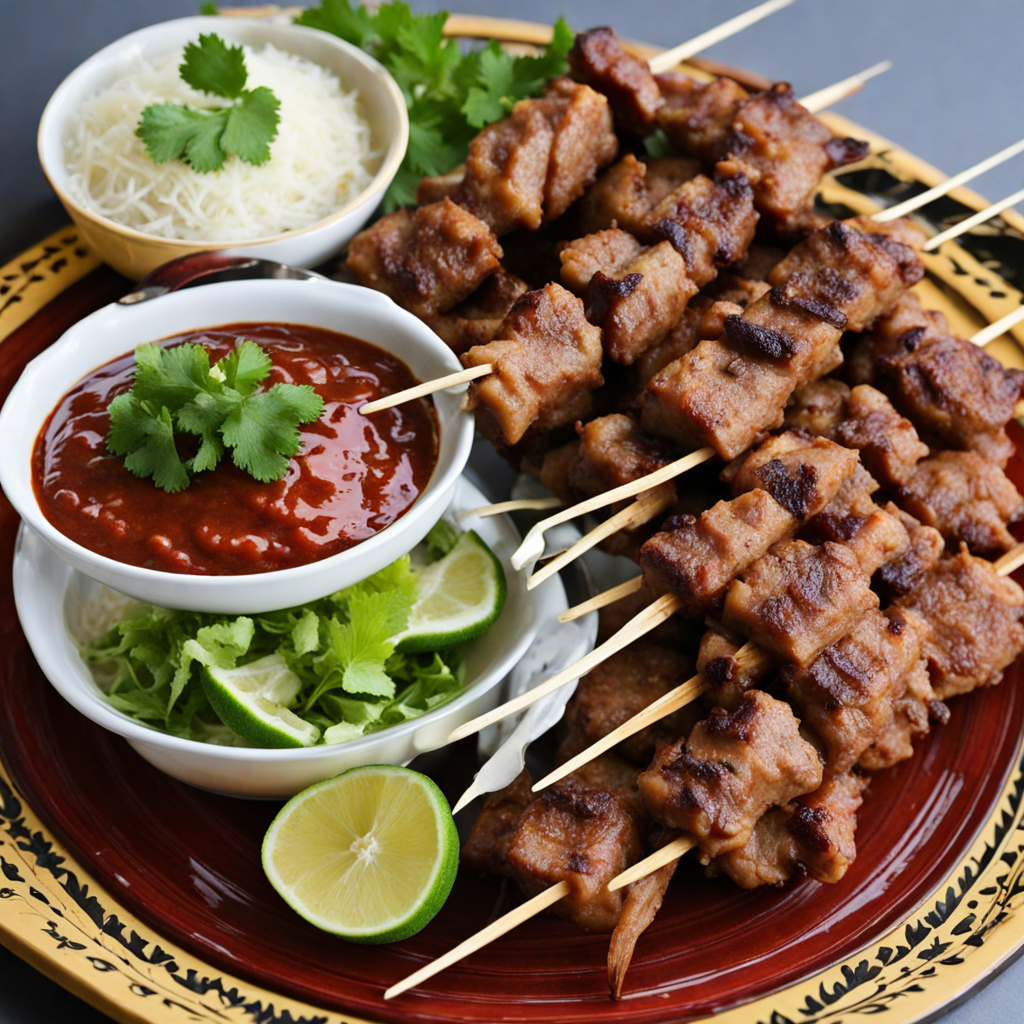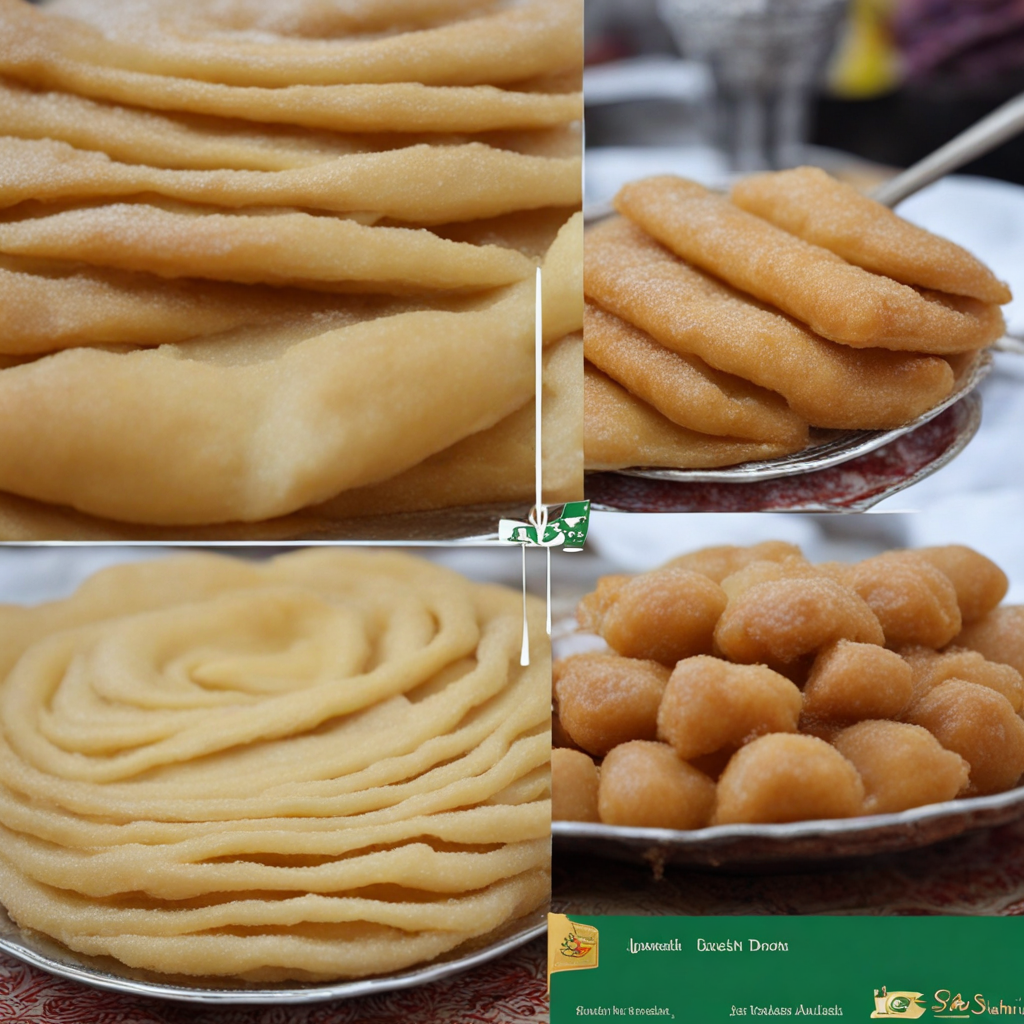Mashkaki
Mashkaki is a tantalizing street food from Djibouti that showcases the rich culinary heritage of the Horn of Africa. This dish consists of marinated skewered meat, typically lamb or beef, that is grilled to perfection over open flames, imparting a smoky flavor that enhances the natural taste of the meat. The marinade often includes a blend of spices such as cumin, coriander, and chili, combined with garlic and lemon juice, creating a vibrant and aromatic profile that tempts the senses. Served on wooden skewers, Mashkaki is not only visually appealing but also offers a delightful texture, with each bite revealing the juicy tenderness of the meat contrasted by the slight char from grilling. Accompanying the skewers are traditional sides that elevate the experience of enjoying Mashkaki. Common accompaniments include a serving of tangy salsa made from tomatoes, onions, and chili peppers, which adds a refreshing crunch and a burst of flavor. Additionally, it is often enjoyed with flatbread, allowing diners to wrap the meat and sauces together for a portable and satisfying meal. The combination of the spicy marinade and the cooling effect of the salsa creates a harmony of flavors that is both exciting and comforting, making Mashkaki a favorite among locals and visitors alike. In Djibouti, Mashkaki is more than just food; it is a communal experience. Often sold by street vendors, it is common to see people gathered around grills, sharing stories and enjoying the lively atmosphere. The dish embodies the spirit of hospitality, as it is frequently served during celebrations or gatherings, inviting everyone to partake in the feast. Whether enjoyed as a quick snack or as a centerpiece of a festive meal, Mashkaki represents the vibrant culture and culinary traditions of Djibouti, making it a must-try for anyone looking to explore new tastes and flavors.
How It Became This Dish
The Engaging History of مشكاكي (Mishkaki) in Djibouti Origins of Mishkaki Mishkaki, a tantalizing skewer of marinated meat, traces its origins to the broader culinary traditions of East Africa and the Arabian Peninsula. The word "mishkaki" is derived from the Swahili language, where "mishkaki" denotes skewered meat. This dish has found its way into the hearts and stomachs of many, but it is particularly celebrated in Djibouti, where it has become a staple that reflects the country's rich multicultural heritage. The roots of mishkaki can be traced back to the ancient spice trade routes that connected Africa, the Middle East, and beyond. Djibouti, strategically located at the southern entrance of the Red Sea, served as a critical trading hub for merchants. The influx of various cultures—Arabs, Somalis, Ethiopians, and later, French colonists—introduced a variety of culinary influences that laid the foundation for mishkaki as it is known today. Cultural Significance In Djibouti, mishkaki is more than just a dish; it is a symbol of community and celebration. Often served at social gatherings, weddings, and festivals, this beloved food embodies the convivial spirit of the Djiboutian people. The process of preparing and sharing mishkaki fosters bonds among family and friends, as it is typically enjoyed in a communal setting, often accompanied by fresh vegetables and spicy sauces. Mishkaki is also a reflection of Djibouti's vibrant street food culture. Vendors lining the streets offer their own variations of the dish, making it accessible to locals and visitors alike. The sight of sizzling skewers on charcoal grills is a quintessential aspect of Djibouti's urban landscape, attracting people with the enticing aroma of marinated meat. This street food culture not only provides sustenance but also creates a social environment where stories and laughter are exchanged over shared meals. Development Over Time As Djibouti's cultural landscape evolved, so did the preparation and presentation of mishkaki. Traditionally, mishkaki was made using beef or lamb, marinated in a blend of spices that might include cumin, coriander, garlic, and chili peppers. The marination process is essential, as it infuses the meat with rich flavors and tenderizes it, allowing for a succulent eating experience. The skewers are then grilled over open flames, which impart a smoky char that elevates the dish further. With the passage of time, mishkaki has adapted to the changing tastes and ingredients available in Djibouti. The influence of neighboring countries, particularly Somalia and Ethiopia, has led to the incorporation of local spices and cooking techniques. For instance, the use of berbere spice—a staple in Ethiopian cuisine—has begun to appear in some variations of mishkaki, adding a unique depth of flavor. Furthermore, the introduction of new proteins has diversified mishkaki. While beef and lamb remain popular, chicken and even fish have found their way onto skewers, catering to a broader audience and reflecting the region's access to fresh seafood along its coast. This adaptability illustrates the dynamic nature of Djiboutian cuisine, which is ever-evolving yet deeply rooted in tradition. Mishkaki in the Modern Era In contemporary Djibouti, mishkaki has gained international attention, becoming a culinary ambassador for the nation. The dish has made its way onto restaurant menus around the world, often celebrated for its simplicity and bold flavors. The rise of globalization has also seen the fusion of mishkaki with other global cuisines, leading to innovative interpretations that incorporate diverse ingredients and cooking methods. In addition, the popularity of food festivals and culinary events has provided a platform for local chefs to showcase mishkaki and its variations. Events dedicated to celebrating Djiboutian cuisine often highlight the dish, exploring its history, preparation methods, and cultural significance. These initiatives not only promote mishkaki but also emphasize the importance of preserving culinary heritage in an increasingly homogenized world. The rise of social media has further amplified the visibility of mishkaki. Food bloggers and influencers have highlighted the dish, sharing recipes and inviting followers to experience Djibouti's culinary scene. This digital engagement has fostered a renewed interest in traditional foods, encouraging younger generations to both appreciate and innovate within their culinary heritage. Conclusion Mishkaki, with its rich history and cultural significance, encapsulates the essence of Djibouti's culinary identity. From its origins in ancient trade routes to its status as a beloved staple in social gatherings, mishkaki reflects the diverse influences that have shaped Djibouti's culture over centuries. As it continues to evolve, this dish not only preserves the traditions of the past but also embraces the innovations of the present, ensuring that mishkaki remains a cherished part of Djibouti's gastronomic landscape for generations to come. In every bite of mishkaki, one can taste the stories of community, celebration, and resilience that define the Djiboutian spirit. Whether enjoyed on the bustling streets of Djibouti City or recreated in kitchens around the world, mishkaki serves as a delicious reminder of the interconnectedness of cultures and the universal joy of sharing food.
You may like
Discover local flavors from Djibouti







